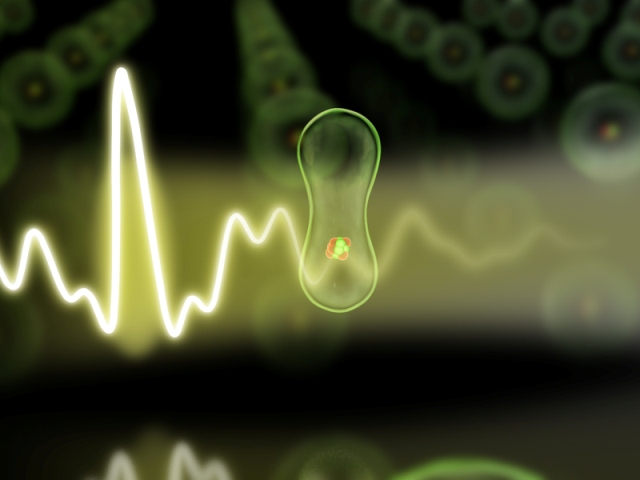Feb 4 2016
In the race to establish ever-faster electronics, light could play an important role. For instance, using light pulses of a precisely controlled waveform, physicists aim to switch electric currents in electronics circuits with light frequencies.
 Optical attosecond flashes capture the motion of sluggish electrons.Graphic: Christian Hackenberger
Optical attosecond flashes capture the motion of sluggish electrons.Graphic: Christian Hackenberger
But will electrons in such circuits follow light oscillations instantaneously? How fast will electrons react to the push of a “light-based” button? Or, from a more fundamental perspective: how fast do electrons bound in atoms, molecules or solids respond to light?
Now, an international collaboration of physicists led by Dr. Eleftherios Goulielmakis, head of the research group “Attoelectronics” at the Max Planck Institute of Quantum Optics, researchers from Texas A&M University, USA, and the Lomonosov Moscow State University, have been able to track the effect of this delay for the first time. By creating the first optical attosecond pulse and using it to set electrons in krypton atoms in motion, they discovered that it takes as long as 100 attoseconds for electrons to respond to the electromagnetic forces of light. (Nature, 4 February 2016, DOI: 10.1038/nature16528)
Even for electrons, the lightest particles residing outside the atomic nucleus, quantum mechanics predicts that when exposed to light, a tiny but finite time interval to respond to the forces of light is necessary. But this time interval is predicted to be extremely brief – in the order of tens to hundreds of attoseconds, with one attosecond being one billionth of a billionth of a second. Owing to its brevity, such a phenomenon was considered by scientists immeasurably fast for many decades.
“A prerequisite for capturing such a brief event is a light flash which can pull electrons – or to use the scientific term, polarize them – extremely quickly, and thus probe their response,” said Dr. Mohammed Hassan, a researcher in the group of Dr. Goulielmakis. With a light-field synthesizer, a device which can manipulate the properties of visible light and nearby infrared and ultraviolet frequencies, the scientists were able to compose visible light pulses as short as 380 attoseconds. These light pulses are so short that they entailed barely more than a half-oscillation of a light field in their time profile. This makes them the fastest pulses of visible light ever created. “We can now not only manipulate visible light with attosecond precision, but also confine its waves into attosecond time intervals,” said Dr. Tran Trung Luu, a researcher in the Attoelectronics group.
With this novel tool at hand, the researchers flashed krypton atoms with optical attosecond pulses. They performed several experiments, each time with a pulse that would apply a slightly different force to the electrons. To check how the electrons responded, they measured the ultraviolet radiation of the wiggling electrons in a vacuum. From the measurements, they were able to deduce that electrons would need some 100 attoseconds to react to the force of light.
“Our study closes a several-decades-long inquiry into the fundamental dynamic response of matter to light fields. From the rotation and the nuclear motion in molecules captured in the last decades with femtosecond technology, we are now able for the first time to track in real time the response of electrons bound in atoms,” Dr. Goulielmakis pointed out. “But at the same time, it opens up a new era of probing and manipulating matter on the electronic level,” he added.
As one of the next steps, Dr. Goulielmakis and his team plan to extend the studies of electron dynamics in solid materials. “Tracing and controlling electrons in solids will enable us to identify the most promising routes for novel ultrafast electronics and photonics operating on sub-fs time scales and at Petahertz clocking rates,” Goulielmakis said. Olivia Meyer-Streng